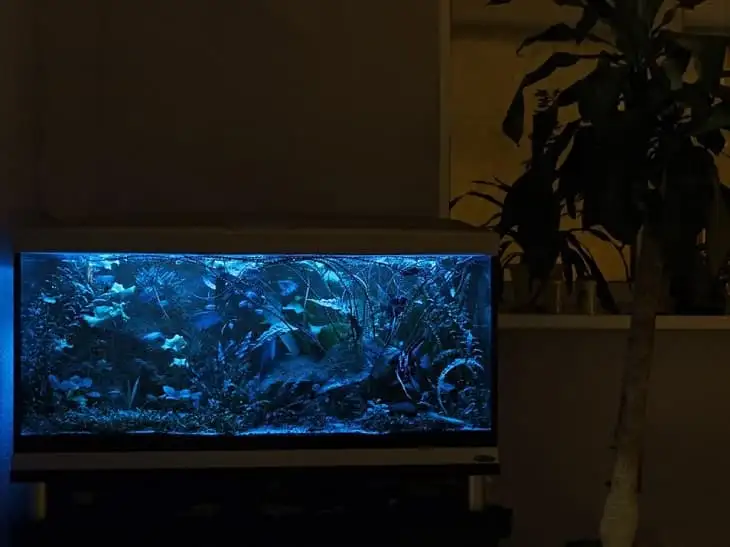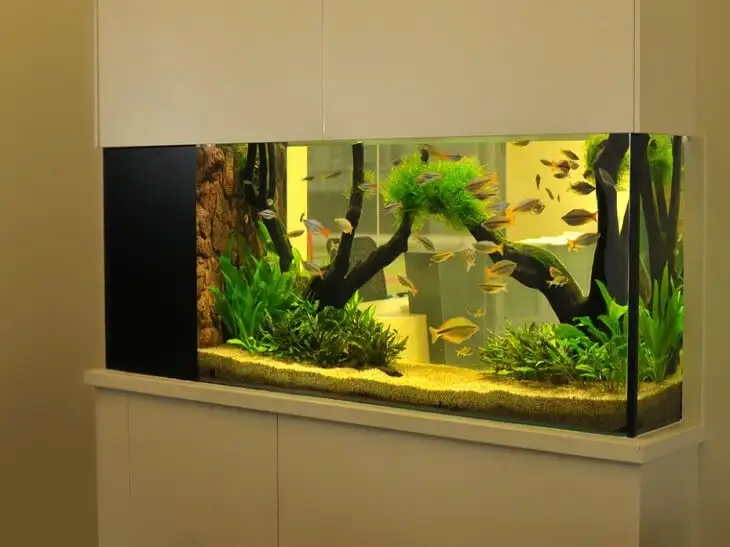LED NIGHT LIGHT FOR THE AQUARIUM

Due to the rapid development of aquarium lighting technology, aquarists now have the opportunity to add specialized night lighting to their aquarium in addition to the regular lighting. So-called LED moonlights are not only ideal for fish that lead a twilight lifestyle, but can also give the aquarium a fabulous nighttime look.
While most aquarium fish have a daytime lifestyle, there are certain species that tend to show their main activity only at night. If you have an aquarium with mainly day-living fish then the fish that are active at night can be neglected. It will be sufficient to light the aquarium for 10-12 hours a day, while turning off lighting at night. While regular aquarium lighting at night is not recommended, there is an option specifically designed to meet the needs of nocturnal fish - LED moonlighting.
What is LED moonlighting?
If you have never used LED lighting in your aquarium, then you have lost a lot - such lighting is the most advanced and has a lot of advantages. Not only is LED lighting very powerful, it is also incredibly energy efficient - it has 8 times more light intensity than fluorescent lights of similar wattage. This lighting does not emit much heat and also has a long lifespan (up to 7 years).
LED moonlighting is a special kind of LED lighting designed to mimic the wavelength of moonlight. In reality, moonlight is simply reflected sunlight, and its intensity varies depending on certain atmospheric conditions. Aquarists used to simulate the rising and falling moon by using blue light filters that were installed under traditional aquarium lights, and some even used Christmas lights for this purpose. Recent developments in this case make all these methods obsolete and offer an inexpensive and effective option for nighttime aquarium lighting.
Benefits of moonlighting
Nocturnal species of aquarium fish tend to spend most of the day hiding, swimming out of hiding places only at night when the lights go out. They become overly fearful in daylight, and do not exhibit natural behavior, preferring to hide in hiding. LED moonlight, on the other hand, simulates natural moonlight, which does not bother nocturnal fish species, and they show their natural behavior. The use of such lighting allows you to observe night fish without disturbing them - some types of moonlighting create a sparkling effect in the water of the aquarium, adding to its aesthetic appeal.
Another important benefit of moonlighting applies to marine reef aquariums. Moonlight induces natural biological activity, both internal and external, for the many creatures that live in reefs, which plays a very important role in coral development and reproduction in particular. While daylight is important for normal coral development, many coral species also continue to grow in moonlight, and for some species, reproduction occurs only at night. If you plan to keep live corals in your aquarium, you should definitely pick up some kind of moonlight.
Using LED moonlighting in the aquarium
Installing LED moonlighting in an aquarium is actually very easy. There are quite a large variety of such lights available in pet stores or online stores. However, if you compare the cost and wattage of the various options, you will find that LED moonlights are the most cost-effective. Remember, LED lanterns are much brighter and more intense than standard or compact fluorescent bulbs, so they are smaller and do not require a massive mount.
Once you have chosen your LED moonlight and installed it in your aquarium, you need to think about how you are going to use it. Most aquarists alternate lighting including daylight for 12 hours and then moonlight for 12 hours. To automate this process, you can purchase an automatic timer that will turn the lights on and off at a set time each day. Automatic timers are inexpensive and easy to use.




